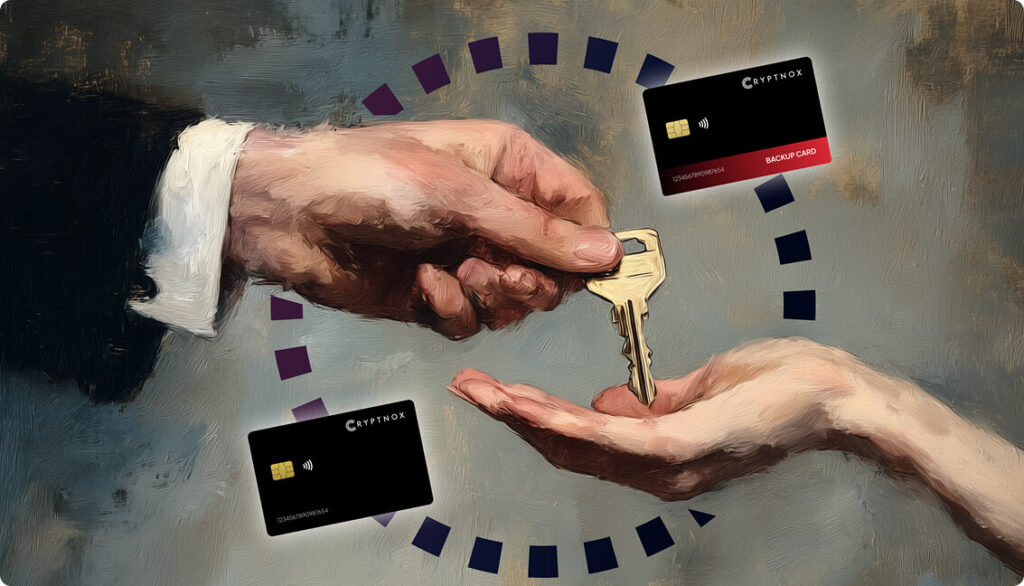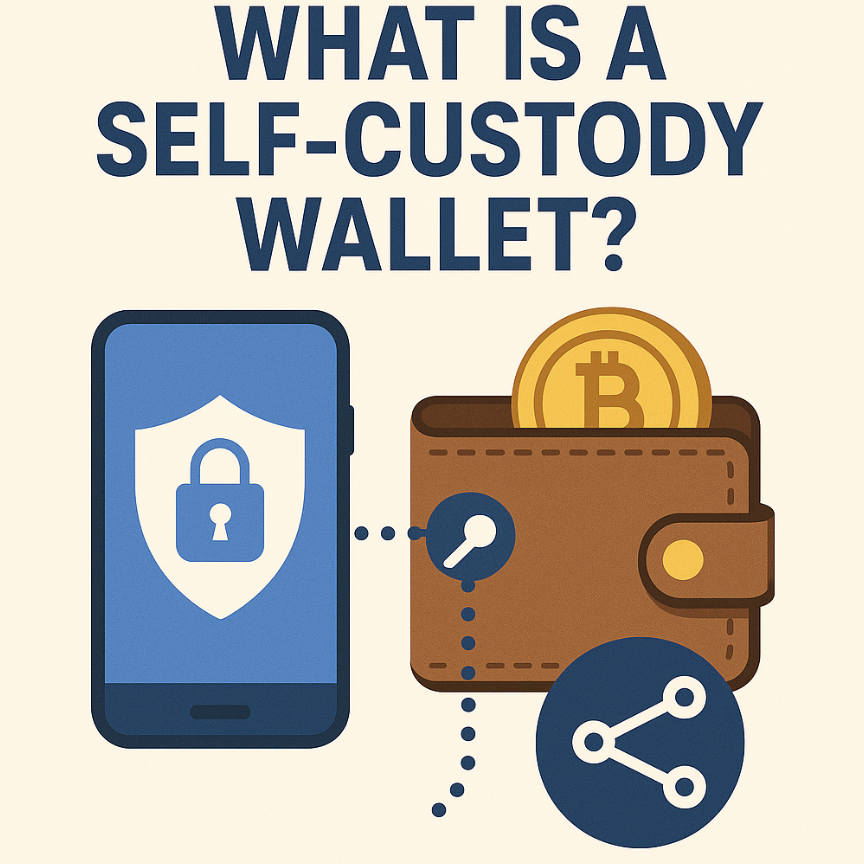Is your digital wallet really safe? Every crypto user wants to know. As criminals get smarter, one dangerous tool keeps showing up: the cryptodrainer. If you’ve ever heard of a scam draining someone’s entire crypto balance in seconds, you’ve seen a drainer at work.
Try our Hardware Wallet and keep your funds safe – Cryptnox
What is a Cryptodrainer?
A cryptodrainer is a malicious program or script built to steal cryptocurrency from digital wallets. Instead of hacking passwords, drainers trick users into signing fake transactions that send every token straight to a criminal’s wallet. These attacks are quick, effective, and nearly impossible to reverse. As crypto adoption grows, drainers have evolved to exploit new platforms and users across the globe.
Anatomy of a Cryptodrainer Attack
Cryptodrainer threats usually follow a predictable pattern:
- Criminals create fake websites or use phishing links that look like real crypto platforms.
- Victims are lured with tempting offers, like free airdrops or new NFT launches.
- Once a user connects their wallet and signs a transaction on these sites, the drainer script activates.
- Crypto assets move, often automatically, to the attacker’s wallet.
Why Are Drainers So Hard to Stop?
Drainers exploit both technology and human psychology. Instead of breaking through software security, they wait for a user to unknowingly authorize a transaction. Smart contracts triggered by these drainers often hide their true purpose. Once executed, the assets vanish in moments and are nearly impossible to recover.
Drainers are also sold through “Drainer-as-a-Service” platforms on underground forums, making them available to even low-skilled criminals. These platforms typically:
- Offer ready-to-use draining scripts.
- Support multiple blockchains.
- Share stolen funds between the service operator and criminal affiliate.
Attackers keep the setup simple so almost anyone can run a scam with little effort.
How Drainers Spread: Phishing, Social Engineering, and Fake Dapps
Modern attacks use tricks, including:
- Hijacked social media accounts to post fake Mint or Airdrop links.
- Impersonating major brands and platforms.
- Malicious decentralized apps (dApps) that request wallet access, then drain funds with a single transaction.
- Obfuscated scripts that hide in websites or browser extensions.
Some recent attacks used AI-generated drainers, making detection tougher than ever.
Drainer-as-a-Service: An Emerging Dark Web Business
Drainer-as-a-Service (DaaS) is changing the threat landscape. Here’s how it works:
- Affiliates sign up, pay a deposit, and get access to scripts.
- DaaS operators take a percentage cut, typically 5-25% of stolen assets.
- Some DaaS tools support multiple chains and offer regular updates, “premium support,” or help with laundering stolen funds.
- Notorious DaaS brands have appeared but always avoid naming direct competitors here.
Why Are Crypto Drainers Growing So Fast?
The surge in crypto adoption is matched by rising illicit activity:
- More people use hot wallets and connect to DeFi platforms, increasing their exposure.
- Stablecoins now represent 63% of illicit crypto laundering, showing criminals favor these for fast transfers.
- Asset tracking is harder due to advanced obfuscation and mixers.
Protecting Yourself from Cryptodrainer Attacks
Luckily, there are reliable ways to protect your crypto assets, most of which are easy to implement:
Simple Tips to Stay Safe
- Always double-check website URLs before connecting your wallet.
- Avoid clicking on suspicious airdrop links or social media posts.
- Never sign transactions unless you are absolutely sure of their origin.
- Use hardware wallets that keep keys offline and out of reach for drainers. Hardware wallets like Cryptnox add biometric protection and secure backup, offering a physical barrier to thieves.
- Stay updated on scams and recent attack methods.
Why Hardware Wallets Are Your Best Defense
Hardware wallets are essential for anyone serious about crypto security. They provide offline protection, preventing online threats and hacks. If you’re new to this technology, you can learn what a hardware wallet is and how it works to keep your crypto safe. Once you’re familiar with the basics, discover how to use a hardware wallet effectively to manage and safeguard your digital assets.
Discover Us – Cryptnox – Best Hardware Wallets
Cryptnox specializes in advanced smart card technology for blockchain applications, focusing on secure authentication and digital asset management. Their solutions cater to both consumers and businesses, offering a seamless and user-friendly experience.
Key Features and Products
–FIDO2 Smartcard: Offers secure single- or two-factor authentication with FIDO2 Level 1 certification, ideal for personal and enterprise use. It supports passwordless authentication and is compatible with various platforms like Gmail, Facebook, and more.
–Hardware Wallet: Provides secure crypto storage with a dual-card backup system, biometric authentication, and seamless Web3 integration. It supports multiple blockchain networks, including Ethereum and Bitcoin.
–For Business: Cryptnox offers White Label Crypto cards specifically designed for banks, fintech companies, and financial institutions. These customizable hardware wallet cards enable secure and user-friendly cryptocurrency management while providing full regulatory control, allowing institutions to maintain compliance and oversight over their crypto services.
Innovations and Certifications:
– Cryptnox is a member of the FIDO Alliance and their products are based on chips with certifications such as EAL6+ Common Criteria and FIPS 140-2 Level 3, ensuring high-security standards.
– Their solutions are designed for simplicity and user experience, with ongoing research into blockchain card dematerialization.
Target Audience:
Cryptnox products are designed for both individual consumers seeking secure crypto management and businesses like fintech firms and banks looking to integrate advanced security solutions into their payment ecosystems.
Latest Trends and Statistics
- In 2024-2025, nearly $51 billion flowed to illicit crypto wallets, with DeFi and stablecoins leading the charge.
- Phishing attacks have reached an all-time high, with more than 1 million incidents reported in just one quarter.
- Seniors and new users are most frequently targeted, resulting in billions in losses.
- Dark web chatter about new drainer malware rose by 135% between 2022 and 2024.
- More than 60 Americans lost $2.8 billion in 2024 to crypto scams.
FAQ:
1. What are cryptodrainers?
Cryptodrainers (also known as wallet drainers) are malicious tools, typically JavaScript scripts or smart contracts, designed to steal cryptocurrency assets from users’ digital wallets. They operate by tricking victims into approving fraudulent transactions that grant attackers unlimited access to their funds, allowing for the rapid and automated transfer of assets like tokens, NFTs, and coins to the scammers’ addresses. Unlike traditional hacks that steal private keys, drainers exploit the wallet connection and approval process in decentralized apps (dApps).
2. How do cryptodrainers differ from traditional phishing or malware?
Traditional phishing often targets usernames and passwords for account takeovers, while malware might install keyloggers to capture credentials. Cryptodrainers, however, are tailored for Web3: they don’t need your private keys. Instead, they masquerade as legitimate crypto projects (e.g., NFT mints or airdrops) and prompt you to “connect” your wallet and sign a seemingly innocuous transaction. This approval hands over control via smart contracts, bypassing traditional security like 2FA.
3. When did cryptodrainers first emerge?
Cryptodrainers began appearing around 2021-2022, coinciding with the NFT boom and increased DeFi adoption. Early instances targeted Ethereum wallets, but they’ve since expanded to chains like Solana and Bitcoin. By 2023, they surged in popularity, with tools advertised on dark web forums and Telegram channels.
4. Who creates and uses cryptodrainers?
They are developed by skilled cybercriminals, often sold or rented via “Drainer-as-a-Service” (DaaS) models on underground markets like Telegram and Discord. Novice scammers can buy kits for $100-$500, making this accessible to low-skill actors. Providers take a cut (e.g., 20%) of stolen funds, fueling a profitable ecosystem.
5. What blockchains are most affected by cryptodrainers?
Primarily Ethereum and its Layer 2s (e.g., Polygon), due to smart contract complexity. Solana has seen a rise since late 2023, with campaigns stealing over $900,000 using tools like CLINKSINK. Bitcoin drainers are simpler and less common, focusing on address generation rather than contracts. Emerging chains like Avalanche and Cardano are increasingly targeted as adoption grows.
6. Are cryptodrainers only for individual users, or do they target businesses?
While primarily aimed at retail users, drainers can impact businesses via supply chain attacks (e.g., compromised dApps or APIs). Projects mimicking exchanges or NFT platforms have led to reputational damage and indirect losses for legitimate firms.
7. What is the step-by-step process of a cryptodrainer attack?
- Luring the Victim: Scammers create fake websites mimicking popular projects (e.g., airdrops via lookalike domains like “phantom-wallet[.]io”).
- Phishing Delivery: Victims are directed via social media ads, hijacked accounts, Google search results, or email.
- Wallet Connection: The site prompts wallet connection (e.g., MetaMask) for a “claim” or “mint.”
- Malicious Approval: A transaction is generated requesting broad permissions (e.g., unlimited token spends).
- Draining: Once signed, the drainer scans the wallet, prioritizes high-value assets, and executes transfers, often obfuscated to evade detection.
- Laundering: Stolen funds are tumbled through mixers like Tornado Cash.
8. What techniques do drainers use to hide their transactions?
Drainers employ obfuscation: encoding scripts to bypass antivirus software, using small “dust” transactions to trigger access, or mimicking legitimate contract interactions. Advanced versions leverage AI to simulate normal user behavior, delaying detection.
9. Can cryptodrainers access cold wallets or hardware devices?
Generally, no, hardware wallets (e.g., Ledger, Tangem) require physical confirmation for transactions, preventing remote draining. However, if you connect a hardware wallet to a compromised dApp and approve a malicious contract, assets can still be at risk. Software/hot wallets are far more vulnerable.
10. How do “dusting attacks” relate to cryptodrainers?
In dusting, attackers send tiny “dust” amounts of crypto to wallets to track activity. Interacting with the dust (e.g., consolidating funds) can trigger a drainer, granting access. This is a common prelude to full drains.




